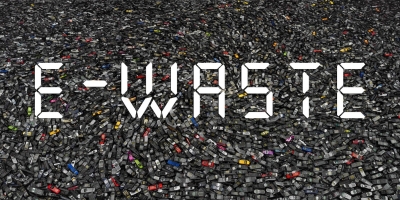
Today, everyone owns a cellphone – be it smartphone or not. Unlike a few years ago, each member in an urban household today owns a headphone, charger, laptop, and a pendrive. Our lives revolve around televisions, modems, desktop computers, Al assistants, and a whole lot of gadgets and their electronic accessories. Most of these devices have a short lifespan and they have to be replaced within a few years, if not months. Those that have reached their end of life often get dumped in landfills, adding to the toxic pollution and leach into our environment some way or the other.
Electronic waste or e-waste is a global problem. While we focus much of our attention on plastic, e-waste has silently grown to be the fastest growing stream of waste worldwide. According to the latest assessment by the WEEE Forum, an international expert group dedicated to tackling the global problem of e-waste, the mountain of electronic and electrical equipment discarded in 2021 will weigh more than 57 million tonnes – greater than the weight of the Great Wall of China. Earth’s heaviest artificial object. Only 17.4% of this electronic waste containing a mixture of harmful substances and precious materials will be recorded as being properly collected, treated and recycled. According to the United Nations, in 2021 each person on the planet will produce on average 7.6 kg of e-waste. The WEEE report acknowledges that the COVID-19 pandemic has had a perceptible effect on our use of electronics and digital solutions, with both adults and children relying on e-products for job and schooling.
What constitutes e-waste and why is it a matter of concern?
E-waste, short for electronic waste, simply describes any electronic device or their parts that have been thrown away. Some examples of electronic and electrical waste are used and abandoned computers, tablets, televisions, cell phones, stereos, copiers, scanners, mouses, keyboards, air-conditioners, refrigerators and washing machines.
Dangerous emission
- When not recycled or disposed of properly, e-waste ends up in landfill and is often burned along with other garbage. This can cause emission of toxic chemicals into the atmosphere. Toxins from e-waste can also seep into the soil and contaminate groundwater and waterbodies. This in turn will affect plants, animals and humans.
- Some of the waste may reach unregulated recycling units where the devices are washed in acids for extraction of minute amounts of gold, silver, palladium, copper, or other precious metals and minerals present in them. This can pollute air and water. Workers engaged in this extraction in unregulated units face dangerous conditions, as they work without protective gear such as gloves or masks.
- Exposure to e-waste can cause headache, irritability, nausea, vomiting, and eye pain. Recyclers may suffer liver, kidney and neurological disorders.
- The air pollution from burning e-waste a threat for people living near landfills as they are constantly exposed to toxins. It can damage the nervous system, circulatory system, and kidney and brain development. Respiratory disorders and skin problems are the other risks.
Solutions
- E-waste collection, transportation, processing, and recycling is dominated by the informal sector which is well networked, but unregulated. If both the formal and informal sectors coordinate and work in a harmonious manner, the materials collected by the unorganised sector may be handed over to the organised sector for processing in an environment-friendly way.
- Governments should collaborate with the industry to draw up standard operating procedures and work towards reducing e-waste.
- They should encourage new entrepreneurs in the e-waste sector by providing necessary financial support and technological guidance.
- Incentives can be given to people practising safe disposal of e-waste.
What can you do to reduce e-waste?
1. Think twice: Before you ask your parents for new gadgets, think twice whether you can manage without it. Or try to use an old one.
2. Take good care of your gadgets. Follow instructions given in manuals carefully to ensure longer product life. For instance, do not use mobile while charging as it causes overheating and decreases battery life, besides proving to be life-threatening.
3. Dispose gadgets responsibly: E-waste should not be mixed with general waste or given to unauthorised collectors. Ensure your e-waste reaches regulated recycling units.
Picture Credit : Google




